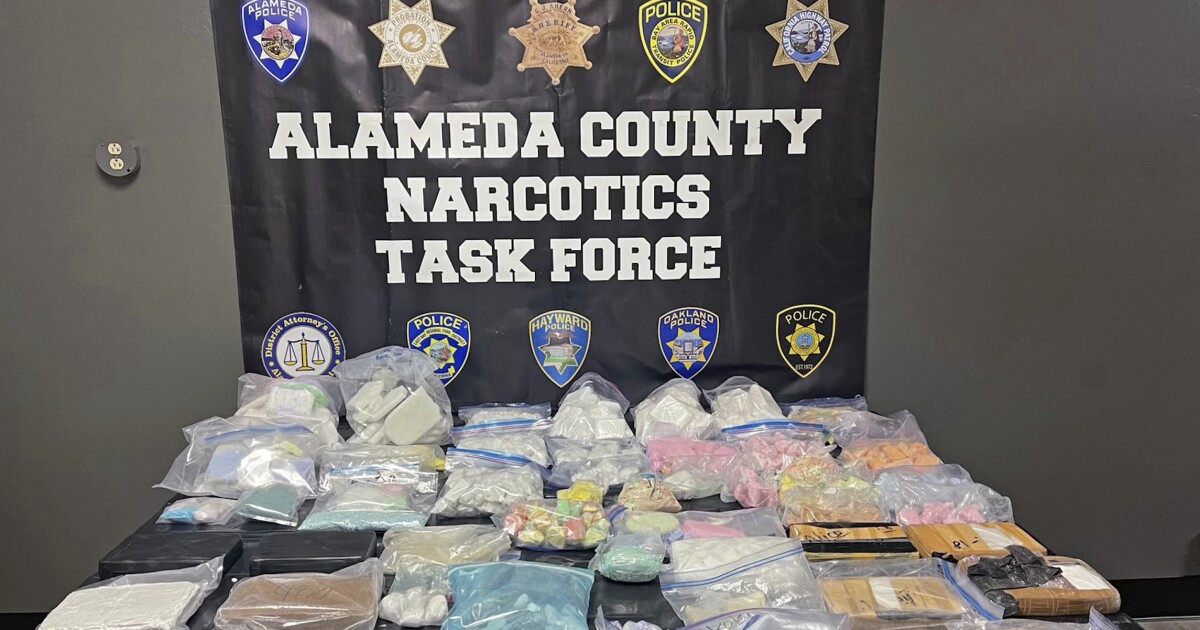

The lethal opiate fentanyl has poured into the United States at astounding rates, with seizures by law enforcement in 2022 expected to surpass those in 2021, indicating that the country is far from its goal of beating the overdose epidemic and that the crisis is instead growing worse.
Fentanyl is a synthetic opiate up to 100 times stronger than morphine and 50 times stronger than heroin. An infinitesimal dose can prove fatal, and drug users are often misled to believe the products they’re consuming are pure when, in fact, they are laced with the lethal opioid.
END OF ROE V. WADE EXPECTED TO INCREASE MATERNAL MORTALITY
Reported fentanyl-related deaths have increased 56% from 2019 to 2020. Deaths linked to the synthetic opioid climbed a further 23% from 2020 to 2021, from about 58,000 deaths in 2020 to over 71,000 the year after.
Over 11,200 pounds of fentanyl were seized by Customs and Border Protection in 2021, a 134% increase from the year before. In the fourth quarter of 2021 alone, law enforcement seized nearly 2.1 million pills containing fentanyl, up from about 42,000 pills seized in the first quarter of 2018, a 4,850% increase.
Data to show the amount of the drug seized so far in 2022 is not yet available, but individual states are reporting a massive uptick. For instance, the Colorado Department of Justice announced last month that law enforcement seized more fentanyl in the first five months of 2022 than in the entirety of 2021.
“While I would love to tell you that our troopers have eliminated the threat of this deadly drug, what we remove is a drop in the ocean. It’s cheap, it’s everywhere, including a strong counterfeit market where people think they are taking other forms of pills,” said Col. Matthew Packard, chief of the Colorado State Patrol.
The Colorado State Patrol made a massive bust last week when it confiscated what law enforcement there believes was the biggest haul of pure fentanyl powder ever seized on a U.S. highway. They intercepted 114 pounds of the narcotic in 48 1-kilo bricks stashed underneath the driver and passenger seats and reachable by a trap door. That’s enough fentanyl to kill nearly 26 million people who take a lethal dose.
The Drug Enforcement Administration has ramped up pleas for local law enforcement departments to be especially vigilant about the use of the drug in their communities and keep the federal agency informed of mass overdoses in their areas.
“The DEA is seeing a nationwide spike in fentanyl-related mass-overdose events involving three or more overdoses occurring close in time at the same location,” said DEA Administrator Anne Milgram. “Many of the victims of these mass overdose events thought they were ingesting cocaine and had no idea that they were in fact ingesting fentanyl… If a mass-overdose event occurs in your area of responsibility, please contact your local DEA office right away.”
The DEA has been monitoring international clandestine labs manufacturing fentanyl, largely in Mexico, China, and India, for years. The drugs are commonly smuggled into the U.S. through Mexico. The dark web has also facilitated access to the drug in powder or pill form by shipping it directly to consumers through the mail.
Fatal drug overdoses hit an all-time high in 2021, with deaths exceeding 107,000 from January through December. The year-to-year rise in overdose deaths was even higher from 2019 to 2020, jumping by a historic 30%. Isolation during the COVID-19 pandemic put a dire strain on people dealing with substance use disorder and those in recovery. Stress attributed to dealing with the damage wrought by the pandemic, such as the deaths of loved ones, has also had a hand in driving up overdose rates.
CLICK HERE TO READ MORE FROM THE WASHINGTON EXAMINER
The Biden administration has professed its goal of eradicating the epidemic of fatal drug overdoses in the U.S. The White House revealed a National Drug Control Strategy to address the problem in April, though little has been done at the federal level to make a meaningful difference in the volume of fentanyl on the streets. Some of the administration’s goals include expanding access to harm reduction interventions including the overdose reversal drug naloxone and compelling Congress to boost funds for the DEA to destroy drug traffickers and transnational criminal organizations by cutting into their profits.




